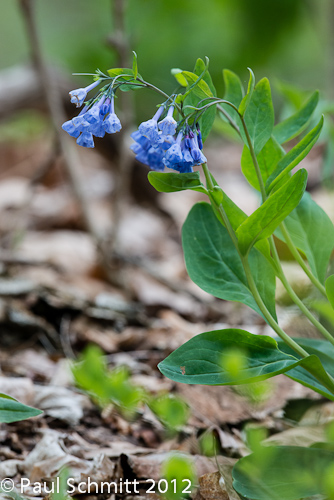The Wild Geraniums instantly got my interest. Just love their color and simple form.
While the garden is devoted to native plants, it is virtually impossible to keep non-native plants out. Think of how impossible it is to banish dandelions for your garden or lawn.
So, the garden also has masses of lovely pink and purple Dame's Rocket. Now, this plant is widely called Phlox, but it is not. Phlox has the same colors, but it has five petals. This has four. I am sure the small bee on the flower doesn't care what the name is. End of botany lesson.
I have Dame's Rocket around my yard, and while I do pull it, I've accepted that it will not be defeated. I accept it in small numbers because the colors are appreciated and it would be too much work to do otherwise. It is a truce.
And, as I continued in the garden, the Dame's Rocket provided a nice framing to some Cow Parsnip that just began to bloom. Cow Parsnip is a sort of coarse and ungainly plant. The bees love it.
Usually, Cow Parsnip grows in large, ungainly masses that make it difficult to photograph in such a way that a single plant's form is clearly seen. So, I liked this combination of Cow Parsnip and Dame's Rocket.
As I continued, I found another plant just beginning to bloom, and it is one of my favorites, Blue Flag.
By this time, I was growing hungry, my companion had to go, and the wind was making it nearly impossible to photograph flowers and get sharp images. Time to grab a Subway and eat while I observed a nearby Redtail Hawk nest. Arrived to find one adult perched nearby. At first, it flew from a perch behind where I stand on the bridge and went to a perch directly above the nest, and then into the nest. The two chicks were dozing. It soon left the nest.
It returned to the perch behind me where I could see it was watching something in the wooded area. It flew into the woods, but returned to the perch with no prey. It was likely a squirrel or chipmunk.
What happened next was pretty exciting as the bird launched from the tree and flew nearly directly overhead on its way to the nest.
After some time, one chick must have rung the dinner bell and the adult hawk responded. She pulled a grey squirrel up from inside the nest and began to deliver bits of food. The other chick in the back watched but did not join in, eventually going off to sleep.
All in all, a pretty good day of birds and blooms.
Paul




























